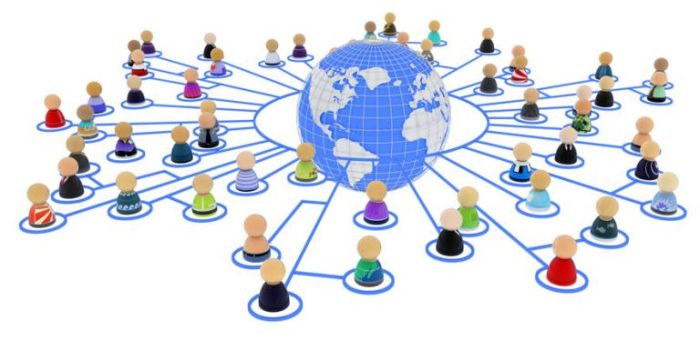
Crowdsourced Translation is revolutionizing how businesses communicate across borders, tapping into the collective skills of multilingual individuals to deliver accurate translations efficiently. Imagine a world where your product descriptions, marketing materials, and user manuals are translated not just by professionals but by a community of language enthusiasts eager to contribute. This innovative approach not only boosts productivity but also opens new opportunities in various industries, creating a dynamic exchange of ideas and culture.
In this discussion, we’ll explore how crowdsourced translation is reshaping sectors from publishing to telecommunications, enabling companies to reach wider audiences without the traditional barriers of language. With technology as the backbone, businesses can harness this collective effort, ensuring that every voice is heard and understood in the global marketplace.
Crowdsourced Translation in the Workplace
Crowdsourced translation is revolutionizing how businesses operate by enhancing productivity and creating new employment avenues in translation services. By leveraging the collective capabilities of a diverse group of individuals, organizations can effectively communicate across various languages, fostering a more inclusive work environment.Crowdsourced translation enhances productivity in several industries, such as technology, marketing, and customer service. It allows companies to tap into a global talent pool, ensuring that translations are not only accurate but also culturally relevant.
As a result, businesses can respond to market demands more swiftly and efficiently. The localization of products and services becomes a seamless process, leading to improved customer satisfaction and increased sales.
Impact on Employment Opportunities in Translation Services
The rise of crowdsourced translation has significantly influenced job opportunities within the translation sector. Traditional translation roles are evolving as businesses increasingly rely on crowdsourced efforts, leading to a more flexible and diverse job market. Key impacts include:
- Increased Demand for Freelancers: Many companies are now hiring freelance translators to work on specific projects, providing flexibility and access to a broader skill set.
- Emergence of Specialized Roles: New positions are being created to manage and coordinate crowdsourced translation efforts, including project managers and community moderators.
- Training and Development Opportunities: As crowdsourced platforms grow, there are more opportunities for aspiring translators to learn and hone their skills via online courses and community feedback.
Role of Technology in Facilitating Crowdsourced Translation for Businesses
Technology plays a crucial role in enabling crowdsourced translation, making it easier for businesses to engage with global audiences. Various tools and platforms have emerged to streamline the translation process, ensuring efficiency and quality.Key technological advancements include:
- Translation Management Systems (TMS): These platforms allow businesses to automate workflows, manage projects, and collaborate with translators seamlessly.
- Machine Translation (MT): While not a replacement for human translators, MT complements crowdsourced efforts by providing initial drafts for translators to refine, enhancing speed and accuracy.
- Collaboration Tools: Technologies such as cloud-based communication and editing tools facilitate real-time collaboration among translators, clients, and project managers.
“Technology acts as a bridge, connecting businesses with diverse linguistic talents worldwide, thus enhancing communication and collaboration.”
Benefits of Crowdsourced Translation for Industrial Goods and Services

Crowdsourced translation has emerged as a powerful tool for various industries, particularly in the realm of industrial goods and services. By leveraging the diverse linguistic abilities of a large group of individuals, companies can achieve more accurate and culturally relevant translations, which are essential for operating in global markets. This method not only enhances the quality of translations but also reduces turnaround times and costs, making it an attractive option for industries such as publishing, telecommunications, and textiles.
Advantages of Crowdsourced Translation in the Publishing and Printing Sectors
In the publishing and printing sectors, crowdsourced translation offers several key advantages that can significantly enhance the production of multilingual content. These benefits include:
- Cost Efficiency: Utilizing crowdsourced translators often results in lower costs compared to traditional translation services, allowing publishers to allocate budgets more effectively.
- Diverse Linguistic Perspectives: Crowdsourcing allows for a variety of translators, which can lead to more culturally nuanced translations that resonate with different target audiences.
- Faster Turnaround Times: With many contributors working simultaneously, projects can be completed more rapidly, essential for publishing timelines.
- Community Engagement: Engaging the crowd fosters a sense of community and brand loyalty among contributors who may feel invested in the content they help create.
Methods for Implementing Crowdsourced Translation in Telecommunications and Textiles Industries
Implementing crowdsourced translation within telecommunications and textiles requires strategic planning and a robust platform. Effective methods to deploy crowdsourced translation in these industries include:
- Utilizing Online Platforms: Establishing a dedicated online platform where employees and users can contribute translations, ensuring ease of access and collaboration.
- Incentivizing Contributions: Offering rewards or recognition for contributors can motivate participation and enhance the quality of translations.
- Training Contributors: Providing resources or workshops for translators to understand industry-specific terminology ensures consistency and accuracy across translations.
- Feedback Mechanism: Implementing a system for reviewing translations and allowing for peer feedback helps maintain quality and improve future contributions.
Comparison of Traditional Translation Services with Crowdsourced Approaches in the Context of Domestic Services
When looking at domestic services, the differences between traditional translation services and crowdsourced approaches become evident. Traditional services tend to rely on a small pool of professional translators, which can lead to limitations in perspective and flexibility. In contrast, crowdsourced translation harnesses a wide range of voices and experiences. Key points of comparison include:
- Flexibility: Crowdsourced translation can adapt more readily to changes in project scope or language needs, while traditional services may require more rigid contracts.
- Speed of Service: Projects can be completed more quickly due to the simultaneous efforts of multiple translators in a crowdsourced model.
- Cost Variability: Crowdsourced translation often entails variable costs based on the contribution model, which can be more budget-friendly compared to fixed pricing in traditional services.
- Quality Assurance: While traditional services may offer professional quality checks, crowdsourced translation can leverage community review processes to enhance accuracy through collective oversight.
Crowdsourced Translation in Business Development
Crowdsourced translation is rapidly becoming a crucial component for businesses looking to expand their reach and enhance customer engagement across diverse markets. By leveraging the collective skills of a global community of language enthusiasts and professionals, businesses can create localized content that resonates well with target audiences. This section discusses how businesses can integrate crowdsourced translation into their development strategies, particularly in the areas of marketing for clothing and shoes, as well as the significant role it plays in facilitating international expansion.
Framework for Integrating Crowdsourced Translation
A well-structured framework for incorporating crowdsourced translation into business creation strategies can enhance brand visibility and customer loyalty. The following steps highlight key components of this framework:
1. Identify Target Markets
Determine which international markets present the most significant opportunities for growth based on demand, competition, and cultural fit.
2. Select Translation Platforms
Choose reliable crowdsourcing platforms that connect businesses with experienced translators and language enthusiasts, ensuring high-quality output.
3. Create a Style Guide
Develop a comprehensive style guide to maintain brand voice and messaging consistency across different languages and cultures.
4. Incorporate Feedback Loops
Establish a system for ongoing feedback from translators and local audiences to refine translated content continuously.
5. Measure Impact
Utilize analytics tools to assess the effectiveness of translated content in reaching and engaging target audiences.The adoption of this framework helps businesses to streamline their translation processes while ensuring they deliver culturally relevant content that appeals to local sensibilities.
Challenges and Solutions in Clothes and Shoes Marketing
Marketing clothing and shoes on an international scale presents unique challenges that can be effectively addressed through crowdsourced translation. Some challenges include:
Cultural Nuances
Fashion terminology can vary significantly across cultures, potentially leading to misinterpretation or misrepresentation of products.
Brand Perception
Inconsistent translations may dilute a brand’s image or lead to negative associations with the product. To mitigate these challenges, businesses can implement the following solutions:
Collaborate with Local Influencers
Engage local influencers who understand cultural contexts and can provide insights on language use in marketing materials.
Utilize Specialized Translators
Work with translators who have experience in the fashion industry to ensure terminology is used accurately and effectively.
Test Marketing Materials
Conduct A/B testing of translated content with target audiences to determine which messaging resonates best before full-scale launch.The successful application of these strategies can lead to more effective marketing campaigns that accurately reflect brand values while appealing to diverse customer bases.
Facilitation of International Business Expansion
Crowdsourced translation plays a vital role in enabling businesses to expand internationally by breaking down language barriers. This approach offers several advantages, such as:
Cost-Effectiveness
Crowdsourcing allows businesses to access affordable translation services compared to traditional agency models, which is particularly beneficial for startups with limited budgets.
Rapid Turnaround
The collective effort of multiple translators can significantly speed up the translation process, allowing brands to respond quickly to market opportunities.
Diverse Perspectives
Engaging a broad range of translators brings various cultural insights, ensuring that marketing strategies are tailored to local markets effectively.For example, companies like Airbnb have successfully utilized crowdsourced translation to expand their services globally, enabling them to cater to unique cultural preferences in different regions while maintaining a consistent global brand image.By harnessing the potential of crowdsourced translation, businesses can not only enhance their marketing strategies but also unlock new growth opportunities in international markets.
Epilogue

As we’ve seen, Crowdsourced Translation is more than just a trend; it’s a transformative force in how businesses operate on a global scale. By embracing this collaborative approach, companies can not only enhance their productivity but also diversify their offerings, enriching their brand presence across different cultures. The possibilities are endless as we move towards a more interconnected world where communication knows no bounds.
Question & Answer Hub
What is crowdsourced translation?
It’s a collaborative approach where multiple individuals contribute to translating texts, leveraging diverse linguistic skills.
How does technology facilitate crowdsourced translation?
Technological platforms connect translators with projects, streamline the translation process, and ensure quality control.
What are the key benefits for businesses using crowdsourced translation?
It enhances efficiency, reduces costs, and allows for quick adaptation to new markets and languages.
Can crowdsourced translation affect employment in the translation industry?
Yes, it can create new job opportunities while also changing the demand for traditional translation services.
What challenges might companies face with crowdsourced translation?
Challenges include ensuring quality, managing contributions, and navigating cultural nuances in translations.





